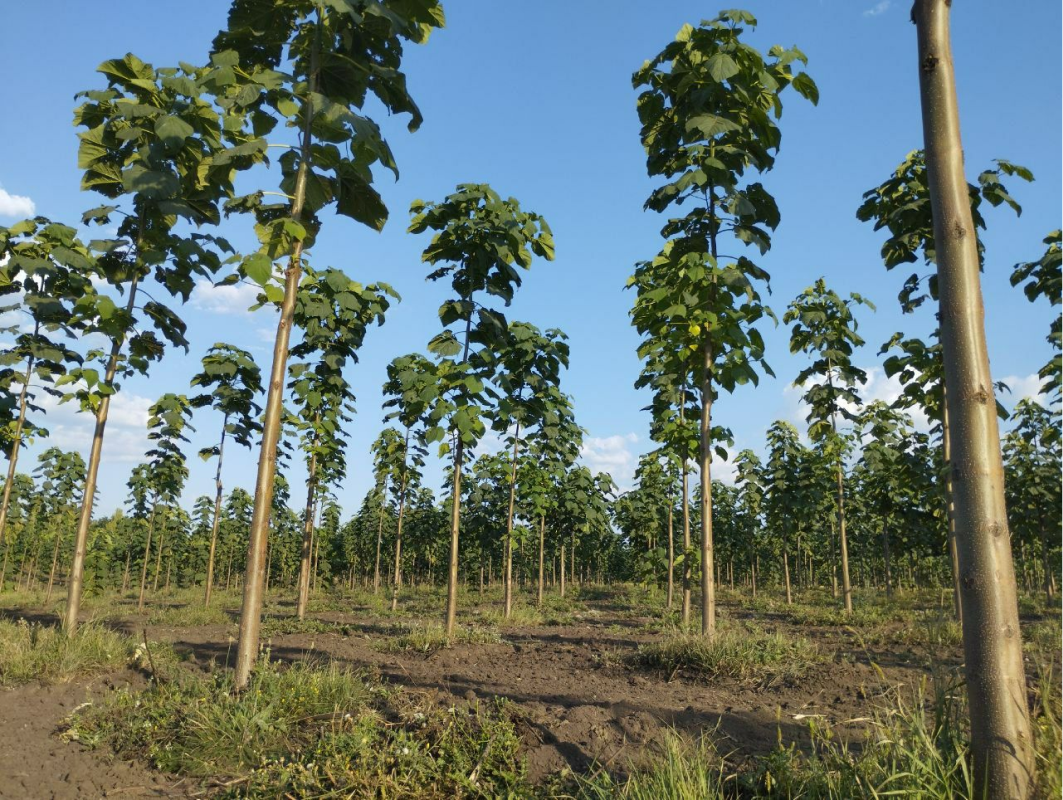Why paulownia is the tree of the future for the agricultural economy

Paulownia, often called the "miracle tree," is earning recognition as a transformative species capable of addressing modern agricultural and environmental challenges. Its unique combination of rapid growth, adaptability, and multifunctionality positions it as a cornerstone for the future of sustainable agriculture. By examining its benefits, we can understand why Paulownia holds the potential to revolutionize the agricultural economy.
1. Unmatched Growth Rate
Paulownia’s growth speed is one of its most remarkable features, making it an incredibly efficient choice for timber production and biomass projects. Few trees in the world can match its ability to achieve substantial size and volume in such a short period.
- Trees can reach impressive heights of up to 20 meters in as little as five to seven years, a fraction of the time required by traditional hardwoods like oak or pine.
- The tree’s diameter growth averages 3–4 cm annually under normal conditions, with potential peaks of 8–9 cm in optimal environments. This rapid development allows for consistent timber harvesting cycles.
By planting Paulownia, farmers and investors gain access to a reliable, fast-growing resource, ensuring quicker returns on investment and meeting increasing demands for renewable materials.
2. Versatility in Applications
Paulownia's versatility extends beyond its wood. Its by-products and leaves have valuable applications across multiple industries, enabling it to contribute to economic growth in diverse ways.
- Timber: Known for being lightweight yet robust, Paulownia wood is a preferred material for high-end furniture, interior design, construction, and even surfboards. Its unique properties also make it easy to machine, minimizing waste.
- Bioenergy: With one of the highest biomass yields among fast-growing trees, Paulownia is a sustainable option for producing biofuels. Its capacity to regrow after coppicing enhances its suitability for energy plantations.
- Agricultural By-products: The tree’s leaves are rich in nitrogen and can be used as organic fertilizer or livestock feed. Additionally, its flowers are a source of high-quality nectar, supporting honey production.
This multifaceted utility ensures that every part of the tree contributes value, reducing waste and providing diverse income streams for farmers.
3. Climate Change Mitigation
In the face of a global climate crisis, Paulownia’s environmental benefits make it a key ally in reducing greenhouse gas emissions and restoring degraded ecosystems.
- Paulownia is an exceptional carbon sink, capable of absorbing 10–20 tons of CO₂ per hectare annually. This makes it a critical tool for carbon sequestration programs and achieving climate targets.
- Its adaptability to poor and degraded soils means it can be planted in areas unsuitable for traditional crops, providing a dual benefit of land restoration and carbon offsetting.
By planting Paulownia, agricultural economies can combat environmental challenges while creating opportunities for sustainable growth.
4. Soil Improvement and Sustainability
Paulownia not only grows quickly but also improves the land where it is planted, making it a natural choice for farmers aiming to enhance soil quality and productivity.
- The tree’s extensive root system prevents soil erosion and improves water infiltration, essential for maintaining healthy farmland.
- Fallen leaves decompose rapidly, enriching the soil with organic matter and increasing its fertility. This makes Paulownia an excellent companion in agroforestry systems.
Incorporating Paulownia into farming practices allows farmers to achieve sustainable yields while protecting and improving the land for future generations.
5. Drought and Stress Resistance
In regions experiencing the effects of climate change, Paulownia’s ability to withstand extreme conditions makes it an invaluable crop. Its resilience ensures reliable growth even in challenging environments.
- Paulownia can thrive in a broad temperature range, from -20°C to 45°C, depending on the species. This flexibility enables its cultivation in diverse climates.
- With deep roots accessing underground water sources, Paulownia requires less surface irrigation, making it highly suitable for areas prone to drought.
This robustness ensures that Paulownia remains a dependable resource for farmers, even in the face of increasingly unpredictable weather patterns.
6. Economic Benefits for Farmers
The economic advantages of cultivating Paulownia extend far beyond its initial planting. Its rapid growth, minimal maintenance requirements, and high market demand translate into substantial profits for farmers.
- High ROI: Paulownia’s short growth cycle and high-quality wood mean farmers can begin harvesting and generating income within five years. Its consistent demand in global markets further enhances its profitability.
- Job Creation: Establishing and managing Paulownia plantations involves activities like planting, maintenance, and harvesting, which create employment opportunities, particularly in rural areas.
These economic benefits make Paulownia an appealing investment, whether for small-scale farmers or large commercial operations.
7. Adaptability to Global Markets
Paulownia’s versatility and unique properties have positioned it as a sought-after commodity in international markets. Its ability to cater to diverse industries ensures long-term market stability.
- The tree’s timber is in high demand in Asia, Europe, and North America for furniture, construction, and decorative purposes. Its lightweight and durable characteristics make it a top choice.
- Its role in bioenergy aligns with global efforts to transition to renewable energy sources, opening additional revenue streams for producers.
With its wide-ranging appeal, Paulownia offers significant potential for international trade, boosting the economic prospects of agricultural economies.
8. Ease of Cultivation
Paulownia’s low-maintenance nature makes it accessible to farmers, regardless of their scale or level of expertise. This ease of cultivation reduces barriers to entry and ensures successful plantation establishment.
- The tree requires minimal chemical inputs, reducing costs and environmental impact. This makes it a sustainable and eco-friendly crop.
- After initial planting, Paulownia regrows quickly after coppicing, eliminating the need for replanting and ensuring continuous harvests.
This simplicity encourages widespread adoption, making Paulownia an ideal solution for farmers seeking sustainable and profitable crops.
Conclusion
Paulownia’s unique combination of rapid growth, multifunctionality, and environmental benefits make it a transformative crop for the agricultural economy. From timber and bioenergy to climate change mitigation and land restoration, this "tree of the future" is poised to revolutionize how we approach farming and forestry. By integrating Paulownia into agricultural practices, farmers and investors can secure sustainable profits while addressing global challenges.

